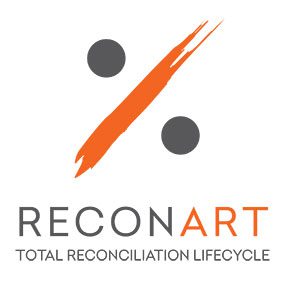
Data reconciliation brings together corresponding data sets to compare and validate them. Transactional businesses often find this a formidable and consequential effort. The process is multi-step, repetitive, and time-sensitive, which makes it ideal for automation.
Account reconciliation software will automate and streamline some of the laborious and time-consuming accounting reconciliation aspects. Strong integration capabilities enable these solutions to achieve all-encompassing automation. Reconciliation processes pull and push large volumes of financial data that need matching according to the company schedules, logic and accounting policy.
Typical challenges around the integration with third-party enterprise applications
Every reconciliation software needs to establish connections with third-party solutions that hold finance data. However, these integrations raise a number of challenges.
Multiple internal or external enterprise applications connected
The reconciliation system would typically interact with more external systems than the average enterprise tool or application. The fact that the reconciliation solution occupies the middle between internal and external enterprise applications suggests more than two connections in the base scenario. Businesses with extensive partnership ecosystems intensively exchange data with third parties and have complex reconciliation requirements.
We have experience with banks, lending non-deposit institutions, payments & cross-border remittance startups, and travel reservation platforms. ECommerce marketplaces operate with a widening network of corresponding banks and local partners in every geography. Their internal application landscape is no less complicated. Clearly, data connectors’ maintenance in their reconciliation department can be quite an effort.
Heterogeneous data sources from many counterparties
The bloated lineup of bank accounts in several currencies and bank institutions can turn unmanageable for department managers. A small reconciliation team really stretches its resources to handle the processing of monthly statements. Splitting the work by bank partners works temporarily, and the lost productivity in low-value manual labor is a fact.
Another expressive example is travel marketplaces. These handle daily reconciliations of hundreds of incoming invoices and supplier statements. Typically, before they proceed with the matching, they must muddle through the manual processing of email attachments and prepare the reconciliation input files.
Different file formats – retrieval, conversion, transformation and enrichment
Despite the efforts to unify the messaging standards across the banking systems, companies still receive their bank or credit card statements in all manner of formats. The treadmill of file conversion looms big as one of the most frequently witnessed challenges with manual reconciliations.
Automated transformation and standardization of transaction data have unrecognized worth beyond the accounting function. Your reconciliation software can become a reference point for verified data. Risk & compliance, planning & analysis, business intelligence, and supplier management can all benefit from this verified data. Standing in the intersection of data streams, your reconciliation platform has the potential to unify them and utilize their full analytical value.
Superb reconciliation functionality takes care of data transformation and enrichment. That is an important preparatory phase in the account reconciliation routine, where specific fields in the data undergo rule-based extraction, transformation and loading. That step may involve calculations using variables from lookup tables. A typical example is the FX conversion operations applied to credit card transactions. For such instances, data updates are also orchestrated within the reconciliation system via integration with a trusted reference source.
The automation of reconciliation data imports
The ReconArt Data Factory (RDF) was designed to respond to the difficulties in the import phase of the reconciliation lifecycle. For some finance teams, a reconciliation process that brings hundreds of external files into the reconciliation system monthly is just as burdensome and problematic as manual transaction matching used to be. Laborious manual imports tend to stall the process and wipe out the efficiency wins in later reconciliation stages.
In the reconciliation office, the predominant channel for receiving counterparty files is via email. Qualified accountants are stuck in low-value errands of downloading attachments, converting files, and manually preparing input files. In case of corrupt or incompatible files rejected by the reconciliation tool, the reconciler has to pause, revert to the sender and troubleshoot, taking the progress several steps backwards.
Now imagine this drill a dozen times daily while under pressure to meet the period-end closing deadlines.
The solution is a neat user interface that intercepts third-party reconciliation data inputs much earlier, at the sender end. If errors occur, there is instant feedback where it can be corrected on the spot. Instead of emailing the file, the sender drops it in the online tool (or a secure, shared folder), which delivers it straight into the reconciliation platform through API connectivity.
Moreover, the tool verifies the file structure and alerts the user if the file is incompatible. It can run diagnostics on the cause of import failure and suggest an alternative and appropriate template. Shortening the data delivery loop alone saves hours for both parties – the reconciliation department and the accounting counterparty.
Exports and reporting of verified financial data
Reconciled accounts, matched transactions, and the resolution history of outstanding items leave the reconciliation systems for several destinations. Internal department collaboration and commitments to external audiences, such as investors, regulators and auditors, depend on the export and reporting features of your reconciliation solution. Reconciliation software users need access to all raw data, record details and metadata and have the instruments to aggregate or filter them.
Legal regulations of banking or finance services require periodic submission of reconciliation data. The regulators in the respective jurisdiction have stepped up the digitalization of their services and operations. The entities under supervision submit data via filling out online forms, manual file uploads and using system-to-system data transfer options.
Compliance officers appreciate a reconciliation system’s ability to produce scheduled custom reports and automatically transfer data via already established connectors with the regulator’s system. Finance and accounting professionals testify that manually filling out reporting forms on external systems is often time-consuming and challenging. Automating that step with system-to-system communication whenever API integration is available streamlines periodic reporting.
Closing the automation cycle of financial reconciliations
Most generic solutions and ERP provide a one-dimensional, economic approach to reconciliations, scratching only the surface of automation capabilities. Diving deeper into the client process specifics can reveal trivial yet impactful efficiency bottlenecks. Automating inbound and outbound data streams at each touchpoint of the reconciliation system redefines its controlling role.
Since 2011, ReconArt has driven innovation in reconciliation software technology and helps a global client base establish robust, flexible and scalable data reconciliation processes. ReconArt delivers an enterprise class, entirely web-based reconciliation platform leveraged by a varied portfolio of customers from every industry, size, and geography.
ReconArt integrates all transactional matching, account reconciliation, and financial close management processes in a secure and auditable environment with a strong focus on best practices, regulatory standards, and compliance mechanisms. The ReconArt SaaS solution ushers in dramatic efficiencies into clients’ existing manual processes generating time savings and reinforcing precision.


























